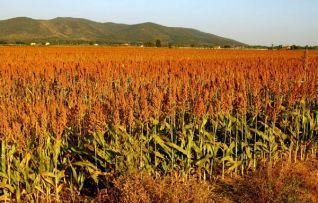Review by Michael Smith (Veshengro)
Companies on a Mission
Entrepreneurial Strategies for Growing Sustainably, Responsibly, and Profitably
by Michael V. Russo
with a Foreword by L. Hunter Lovins
Cloth 272 pages, 4 tables, 15 figures
Published by Stanford University Press 2010 
ISBN-13: 9780804761628
Price $27.95
E-book
ISBN-10: 0804774285
ISBN-13: 9780804774284
Price: $27.95
As the Library Journal states this is a well-written and informative business book that provides valuable tips and background for anyone interested in starting up or managing a socially conscious company.
It is very informative but definitely not a book that you can read in a week for you will be forever making notes on some sticky note pads to stick into the pages in order to go back to it later too – maybe – implement some of the ideas.
"Companies on a Mission” brings academic rigor to the age-old notion of 'going well by doing good' and mission-driven companies succeed, as Mike Russo makes crystal clear in this compelling book, not just because their missions make them greener, but because they make them better. They create quality products, garner a fanatical following, and engender innovation, passion, and fun for employees and customers alike.
But, they also tend to fall flat on their faces when, like the Roddicks with Body Shop, and others, the company and the brand gets sold off to big companies that don't have the same ethos.
While the Roddicks had great morals in business when the company was bought out by L'Oreal things very much went downhill, as far as most of us in the green movement are concerned, and the same also happened to so many other ethical companies when they were bought up by other companies, Rowantree and Cadbury's being just some other examples.
The book is a highly informative and extremely well-written analysis of the creation and growth of ecologically and socially minded firms and it provides a balanced assessment of both the opportunities and the risks that enterprises face in trying to combine social and environmental accountability and survival in the marketplace. While Russo in his book maybe focusing on small firms, the lessons it offers are relevant to all businesses seeking to position themselves and their products as eco-friendly and/or socially responsible. Only, I would think, the bigger the company, especially them publicly owned, that is to say, being one with shareholders, of how ever many, the more difficult it will be.
This also was obvious with the sale of Body Shop, for instance, for while the Roddicks may not have wanted to sell the fact that the company was listed on the stock market and was owned by a fair number of big shareholders who saw this as a chance of making a quick buck the company was sold off to a company that is less than ethical in many of its operations.
But that is my opinion as to the way some of such companies went from good to bad, so to speak, and has, actually, nothing to do with the book.
However, the book is a most valuable source of information and ideas as to how to run a mission-driven company (and the size should not matter) and how to maintain the flow.
Definite worthy of study and worth its price. Only I cannot understand why the E-book sells at the same price as the printed and bound version.
© 2010




















 Sweet Sorghum crops within Mediterranean Landscape
Sweet Sorghum crops within Mediterranean Landscape 






















